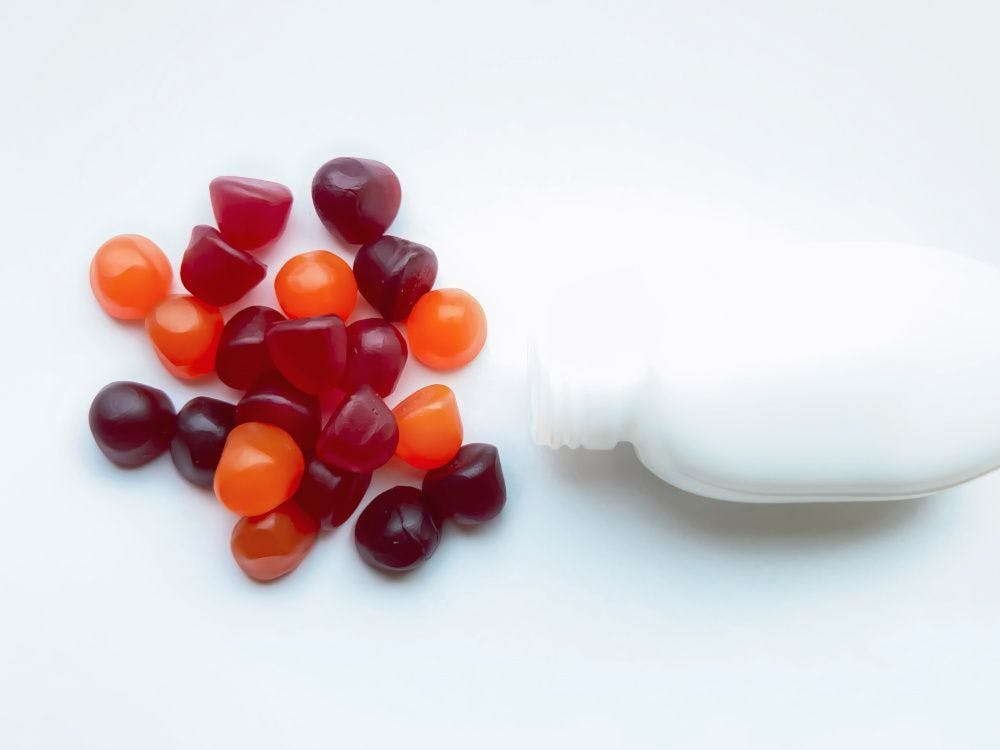Joint health: Ingredient innovation could capture a new generation of customers
Although the joint health consumer skews older, some of the creative new products coming to market might also capture the attention of younger demographics by fitting more conveniently into their daily routine.
Photo © Viacheslav Peretiatko - Stock.adobe.com

The right joint health supplement can improve a person’s quality of life. Innovation in the joint health space today allows for more-versatile products that enhance not only efficacy but also the overall user experience. And although the joint health consumer skews older, some of the creative new products coming to market might also capture the attention of younger demographics by fitting more conveniently into daily routines.
Shifting Preference
Glucosamine and chondroitin sulfate are among the most ubiquitous ingredients in the joint health space, but some of their market share is now slipping to other ingredients. “As research began to indicate that these ingredients either worked too slowly or did not work well at all for a large percentage of individuals, consumer interest in these ingredients has begun to fade,” explains Irfan Qureshi, ND, vice president of product development and quality assurance for supplements company Healthy Directions. “Another challenge with glucosamine and chondroitin is their relatively large doses, which require several pills per day to achieve efficacy.”
Pill fatigue is an ongoing concern for the dietary supplement industry. Maintaining a regimen involving a high number of capsules or tablets can get tiring for customers, particularly when also taking daily medications. Therefore, smaller capsules and tablets that require fewer doses throughout the day, or alternative delivery formats, are ideal. Ingredient suppliers have been developing ingredients that push the bioavailability of the source material to reduce dosage sizes as well as improve solubility for use in novel dosage formats.
In the joint health category, this has led to a move toward herbal ingredients and collagen. Many of these herbal ingredients are based on the Ayurvedic tradition, acting on inflammatory pathways and providing benefits that are experienced relatively quickly.
Qureshi says that turmeric “is well recognized as an anti-inflammatory spice.” He draws attention to several bioavailability-enhanced ingredients on the market that are backed by clinical data specifically on joint health. “All work to reduce the inflammatory cascade contributing to joint pain and discomfort,” he says.
He also highlights boswellia. “Boswellia is also another herb from Ayurvedic medicine known to have potent anti-inflammatory properties. Among other effects, research indicates that it inhibits the 5-loxin enzyme, thus disrupting the inflammatory cascade leading to joint pain and discomfort.”
Ashwagandha, an adaptogenic ingredient known for stress support, is also showing promise for joint support and recovery. “Recent studies on certain ashwagandha extracts have shown significant benefits for pain, discomfort, stiffness, and function in those suffering from joint health concerns,” explains Qureshi. “The actives in ashwagandha may act by multiple mechanisms to support joint relief and comfort, including by blocking cyclooxygenase enzymes (COX) and by supporting soothing effects on nerves, thus leading to an analgesic response.”
A major disruptor of the joint health space has been collagen. Collagen has demonstrated its versatility and utility.
“Growth in collagen really began gaining momentum in 2018,” observes Kimberly Kawa, BSc, wellness product specialist for The Movitz Group, a market strategy consultancy serving the natural products industry.
She continues: “Collagen started gaining interest in a variety of health focuses in the past few years when we saw a major shift in sales from performance nutrition to protein supplements and meal replacements, targeting a broader consumer base. Consumers have several form options to choose from, which increases appeal, including powder, pill, ready-to-drink beverages, and even wellness bars.”
Kawa adds, “Considering that the joint matrix is composed of type II collagen—and consumers may not be educated in the many constituents needed to build type II collagen—they may see straight supplemental collagen as an ideal go-to product for rebuilding joint tissue.”
Like herbal ingredient suppliers, collagen suppliers and manufacturers have been innovating to enhance collagen’s efficacy across multiple dosage formats.
One example is the brand Ancient Nutrition, which manufactures its Multi Collagen Protein supplements line. What sets Ancient Nutrition apart, says Jordan Rubin, the company’s cofounder and CEO, is that the collagen it utilizes is processed using fermentation.
“When it comes to collagen, the size of the peptides and the method of processing has everything to do with the efficacy, activity, and benefits—for joints and other areas of the body,” Rubin says. “Fermented collagen ingredient is produced using microorganisms that ‘pre-digest’ the collagen, making it highly soluble and easy to absorb. In fact, studies on human nutrition have shown that the digestive tract rapidly absorbs fermented nutrients and compounds, including collagen.”
Ancient Nutrition’s Multi Collagen Protein comes in both capsules and powder, which can be used in hot or cold beverages, smoothies, or even food such as pancakes, oatmeal, or cookies. Its benefits are also versatile, shown to not only support knee stiffness and flexibility following exercise but also reduce the appearance of crow’s feet after 28 days. From a healthy-aging perspective, these benefits are appealing to both older and younger consumers, enhancing their bodies and appearance.
Who’s Buying?
Joint pain and stiffness are common problems experienced as we age. Because the core joint-health supplement consumer is older, innovation in the space seeks to measurably improve the efficacy of products for these individuals seeking relief for pain they’re already experiencing. But innovation also opens doors by capturing new consumers. Products like Multi Collagen Protein are able to attract a broader audience because Ancient Nutrition offers multiple dosage formats and flavors as well as multiple benefits that do not alienate younger, active consumers who see the value in maintaining their joint health.
“The demographic that is looking for natural ways to deal with their chronic joint conditions still trends older, and these individuals are more inclined to take products that are more comprehensive or those that target multiple mechanisms of action,” says Qureshi. “However, there is a trend in younger people looking to maintain the health of their joints as they age rather than treat a chronic condition. These individuals are likely looking for more-convenient options that are portable and consumed on the go or after a workout.”
He continues: “This trend is obvious, as raw material suppliers are conducting more studies in younger populations to address the needs of those who are looking to support joint comfort after exertion to support their active lifestyle. Alternate delivery options that are more targeted to joint discomfort with exercise are likely to appeal to this group of consumers.”
Kawa also sees diversification as the future of the joint health category. “Overall, I think successful products are either focused on trending protein ingredients such as collagen, or they are differentiating by incorporating multiple functional ingredients to cover more than one mechanism of action for joint support, such as structural support, inflammation reduction, and immune function,” she says.
For example, the combination of collagen and hyaluronic acid, as well as chondroitin, has become prevalent to support the structure of joints, inflammation, and skin health. Other ingredients to look out for in the joint health space, says Qureshi, are eggshell membrane, which also provides the building blocks of joints and cartilage, as well as palmitoylethanolamide (PEA), which has been shown to interact with the endocannabinoid system (ECS) in the brain, potentially leading to analgesic effects. The list goes on. “Up-and-coming joint health ingredients include tamarind (another Ayurvedic herb), extracts from cucumbers, and astaxanthin,” he adds.
When it comes to all these ingredients, Qureshi says, “Additional research should shed light on the extent of their benefits for healthy joint support.”

Prinova acquires Aplinova to further increase its footprint in Latin America
April 7th 2025Prinova has recently announced the acquisition of Brazilian ingredients distributor Aplinova, which is a provider of specialty ingredients for a range of market segments that include food, beverage, supplements, and personal care.

























